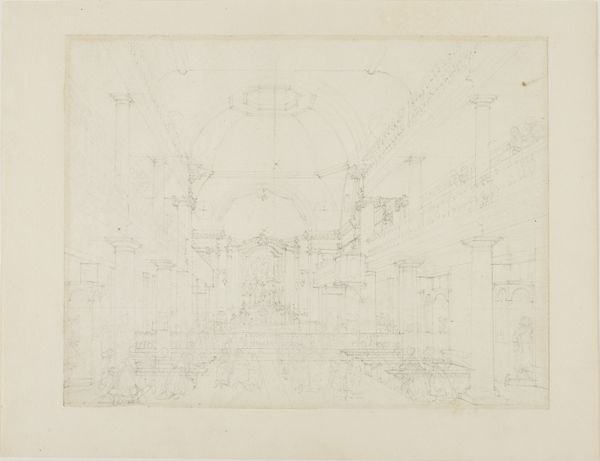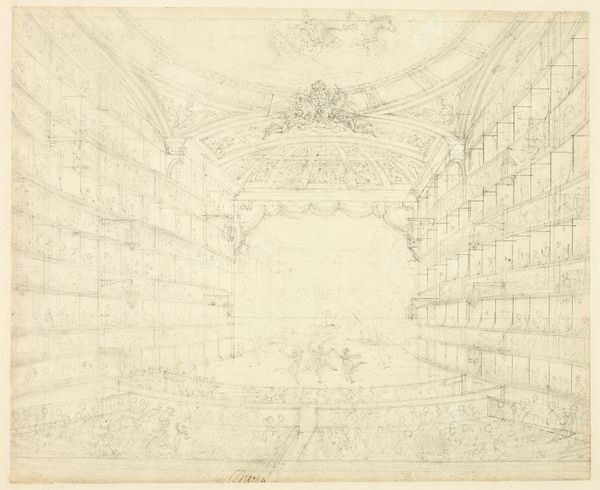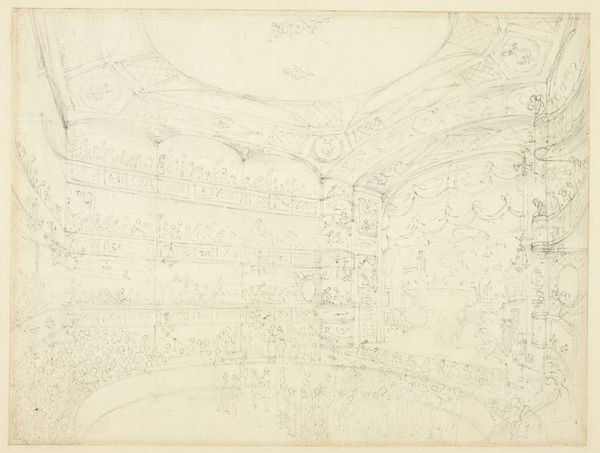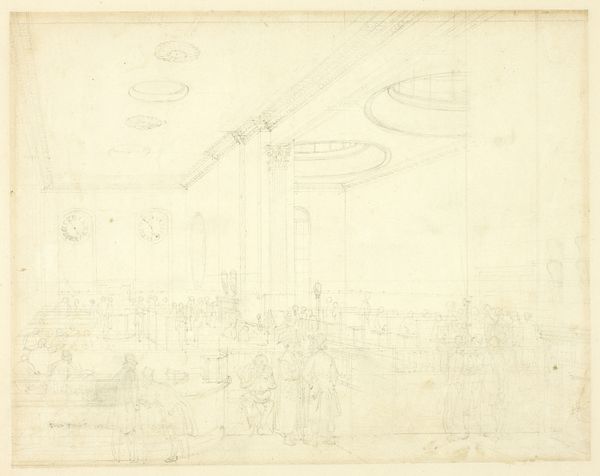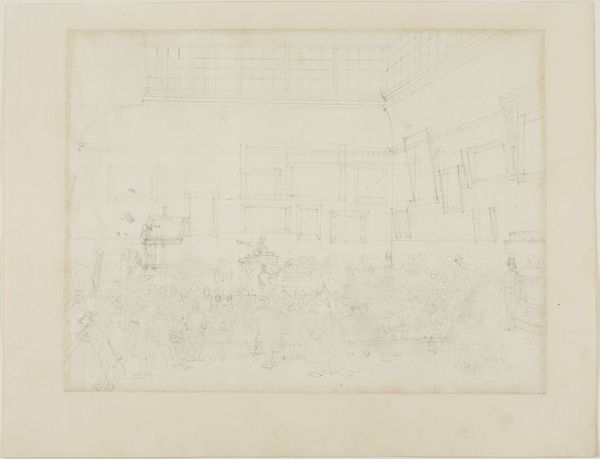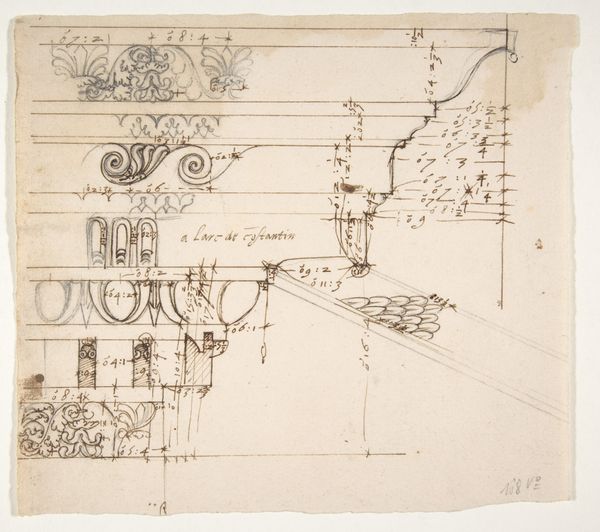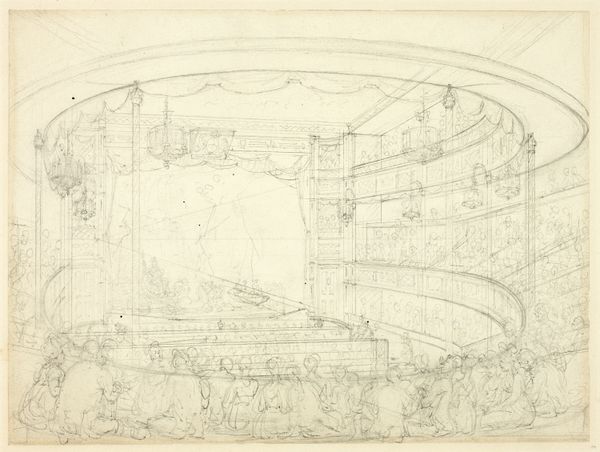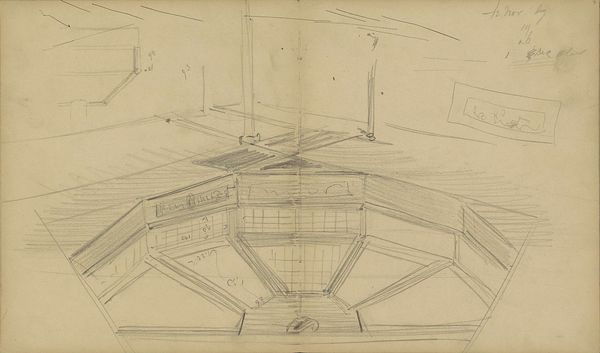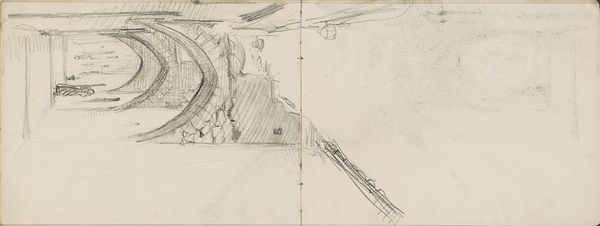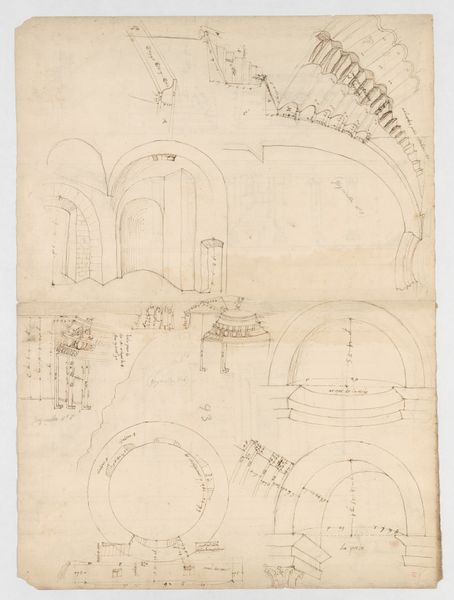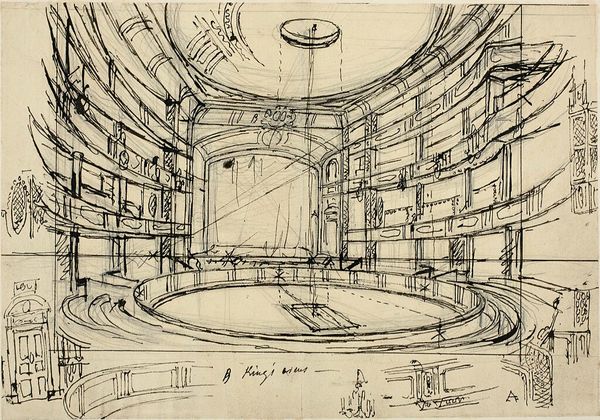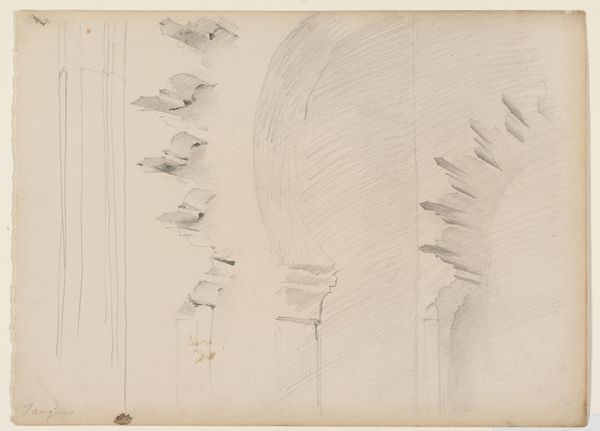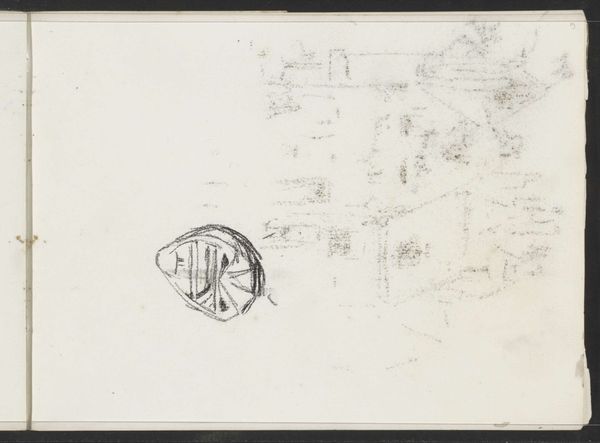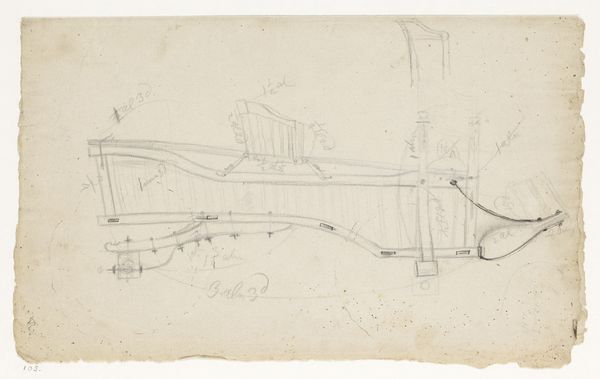
Study for Royal Circus, from Microcosm of London c. 1809
0:00
0:00
drawing, print, etching, paper, graphite
#
drawing
#
neoclacissism
# print
#
etching
#
etching
#
perspective
#
paper
#
line
#
graphite
#
cityscape
Dimensions: 204 × 257 mm
Copyright: Public Domain
Curator: Allow me to introduce "Study for Royal Circus, from Microcosm of London," a drawing by Augustus Charles Pugin, dating from around 1809. It's executed with graphite and etching on paper. Editor: The initial impression is a skeletal elegance—lines articulating space more than defining it. It feels almost like a ghostly blueprint of entertainment. Curator: Precisely. Observe how Pugin uses delicate lines and perspective to delineate the architectural framework. The scaffolding, if you will, for a vibrant social space. It reveals an interest in pure form. The etching enhances those fine lines and gradations. Editor: Yet, it’s not just about pure form, is it? This is a study for the Microcosm of London. The Royal Circus, a popular venue, accessible to various classes. I see a portrait of leisure during a turbulent time in England, caught between revolution abroad and the tightening grip of industrial change. Curator: An interesting consideration. Though, I am more drawn to Pugin's treatment of depth and volume. How he masters the illusion of a receding space within the constraints of a two-dimensional plane. Note, for instance, the oculus overhead, carefully planned sightlines, with structural considerations. Editor: Still, that consideration removes the study from its context, reducing it to pure design, an interesting rendering, perhaps. The real power emerges if one views the Royal Circus, even in skeletal form, as a site of social interaction. Who occupied those boxes? Who filled the pit? These structures aren’t neutral. They reflect power relations and hierarchies in Regency England. Curator: Yes, a crucial point, that does alter our perspective, somewhat, from design to setting the stage for social history. Though one has to respect the careful compositional strategies that structure meaning. Editor: And considering how context can reshape those meanings! This interplay highlights art's fascinating duality—it is both self-contained form and mirror to a world in flux.
Comments
No comments
Be the first to comment and join the conversation on the ultimate creative platform.
